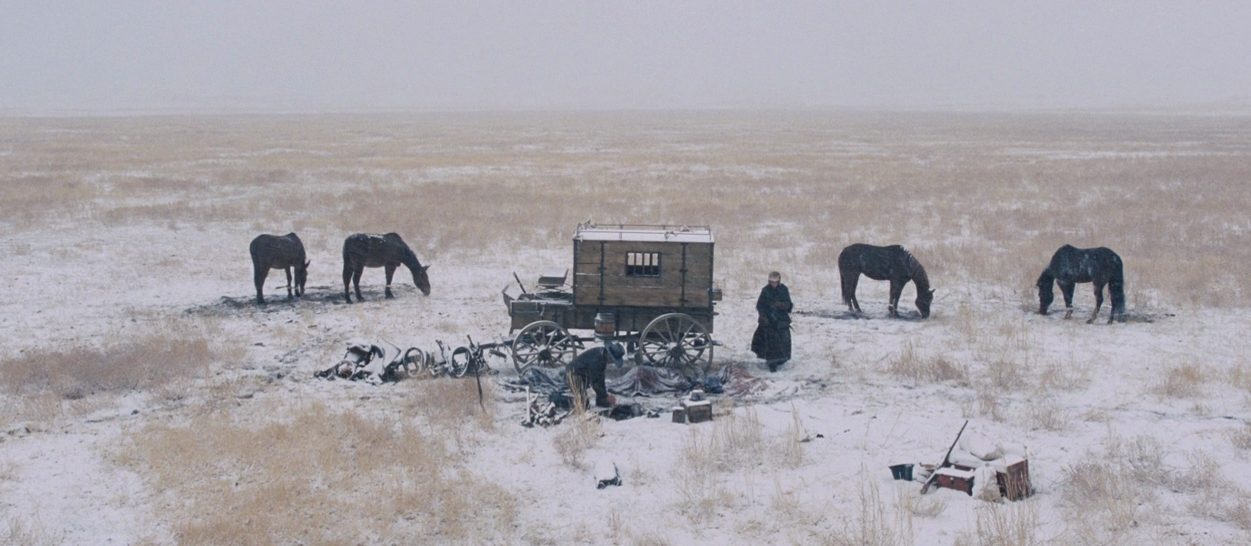
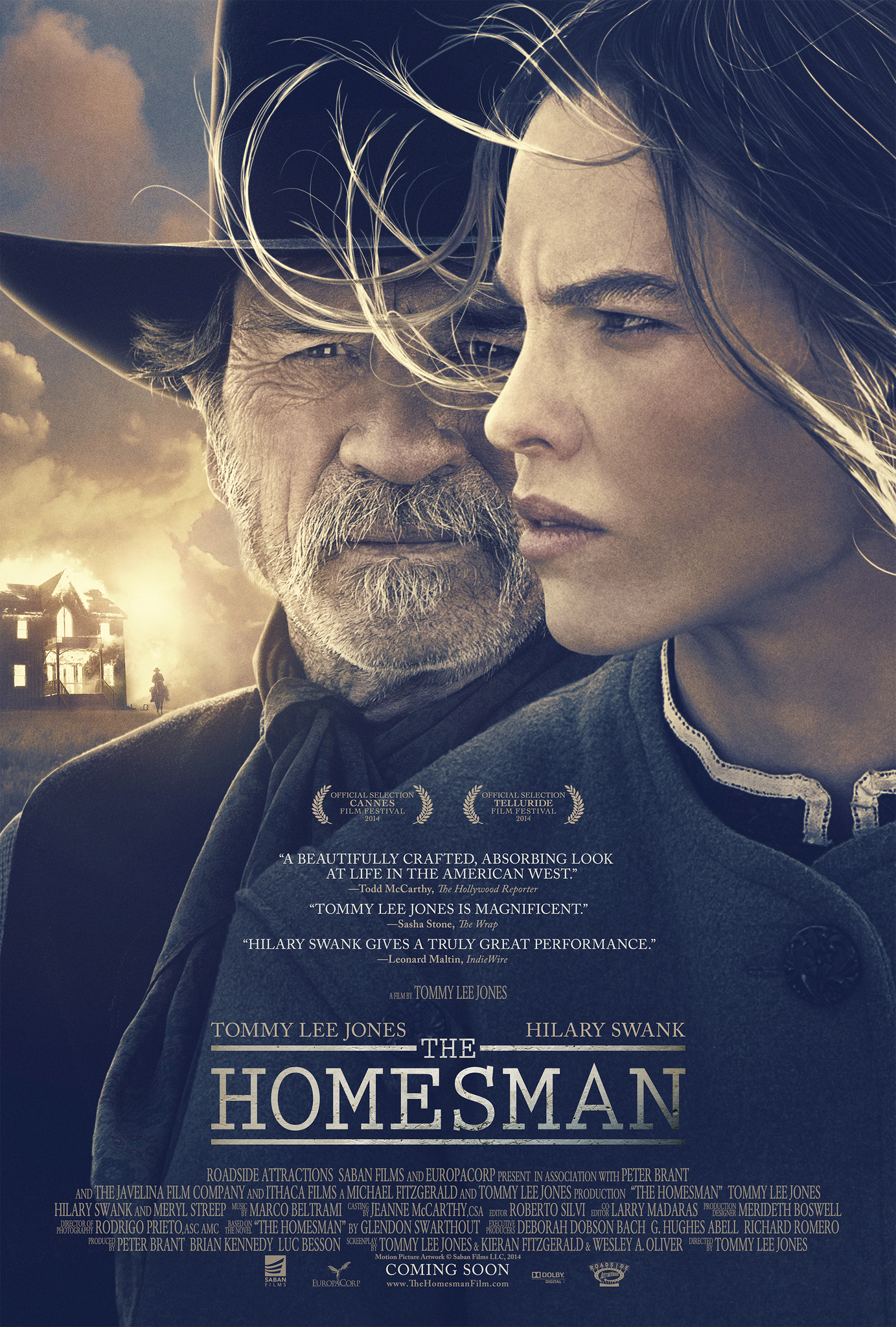
“I can’t live without real music much longer.”
As writer, director, and star of The Homesman, Tommy Lee Jones comes very close to making a classic modern-day Western. Based on a novel by Glendon Swarthout, his tale of harsh frontier life, internal struggles of the heart, and a strong-willed woman paints a rugged portrait of America’s pioneer days that is totally engrossing. Supported by great performances from himself and co-star Hilary Swank, a bevy of strong cameos, a rich script, and solid lensing by Rodrigo Prieto, Jones successfully conjures the now-alien texture of the American frontier.
Despite its familiar sheen, The Homesman is not a typical Western. It takes a lot of risks. Many pay off, some don’t. The journey that serves as the film’s central narrative device is an unconventional one, emanating from a sparsely populated, unnamed Nebraska town and heading East, across the Missouri River, toward a bit of civilized society on its opposite side. Its central characters are all either insane or on the brink of mental instability. And despite its masculine title, the story is set in motion and carried by women.
The American Western is typically a man’s game, but there have been a few standouts that were dominated by a female character—Meek’s Cutoff, True Grit, The Quick and the Dead. Hilary Swank, who is no stranger to portraying strong-willed and independent characters, stars as Mary Bee Cuddy, a hard-working, austere woman who owns a considerable amount of land and is modestly wealthy. In the film’s opening scene we see her in dress and bonnet, walking the plow behind two mules. She then prepares a meal for her neighbor, Bob Giffen (Evan Jones), a young man who she views as a potential suitor. The scene evokes extreme pity. She feeds him dinner, then, while he’s eating his pie, she pulls out a piece of cloth with piano keys depicted on it. She begins to sing while pretending to play, and Giffen soon falls asleep in his chair. She proposes marriage to him and is roundly rejected—maybe for the second or third time, based on his harsh reaction—and is told she is too bossy and plain to be suitable for him. She pitches it as a business proposition—throwing their land in together, their livestock, their finances—but he will not budge. This initial depiction of Cuddy is marvelously realized—she exists in solitude, socially isolated, situated in a delicate, precarious balance between her divergent desires to live virtuously and submit to her depression. But while those battles rage inside of her she projects a strong image and goes about her work.
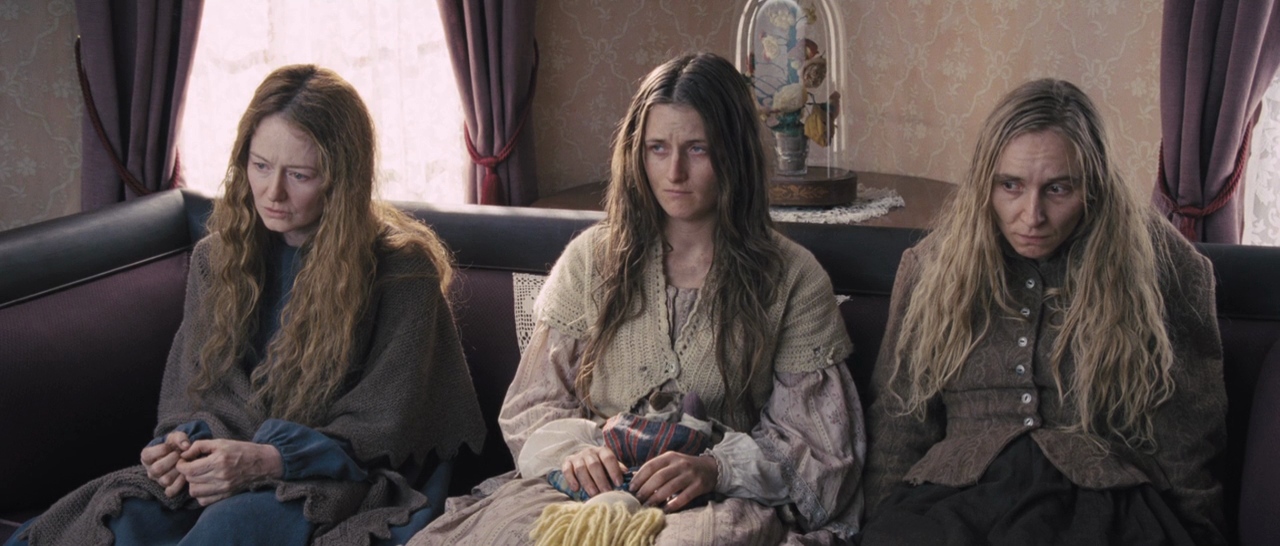
Sensing a need for change, Cuddy volunteers for a mission of mercy. After a brutal winter, three of the town’s women have gone crazy. Their mental conditions are relayed to us in a collage of horrifying flashback sequences—Arabella (Grace Gummers) placing her third dead child on top of the other waste, then sitting forlorn by the window clutching a rag doll; Theoline (Miranda Otto) throwing her crying baby down the chute in the outhouse; Gro (Sonja Richter) screeching as her husband drags her mother’s rotting corpse out of the house and into the wintery night, then later gleefully stabbing herself repeatedly with a sewing needle.
It is a harrowing depiction of madness, starkly presented but also compassionate. The three women are an impossible load to bear for their families and a church in Iowa has agreed to accept them into its care. Once she has her wagon, outfitted with metal rings to chain the women down if need be, Cuddy realizes that she is ill-suited to tackle the months-long journey on her own. Fortuitously, she finds George Briggs (Tommy Lee Jones) with a noose around his neck, waiting for his horse to run out from underneath him and hang him dead. He had been squatting in Bob Giffen’s mudbrick house while Bob went East in search of a wife and was left on the stoop of death by Cuddy’s vigilante neighbors. (To further detail Cuddy’s commitment to a moral way of life, when she learns of this fact, she sides with Bob, the man who had just rejected her.) She makes a deal with Briggs—his life in exchange for his service. This doesn’t quite work in practice and she has to mail him $300 to the church in Iowa with instructions to only hand it over if he arrives along with the women. They form an unlikely partnership and set off toward the Missouri.
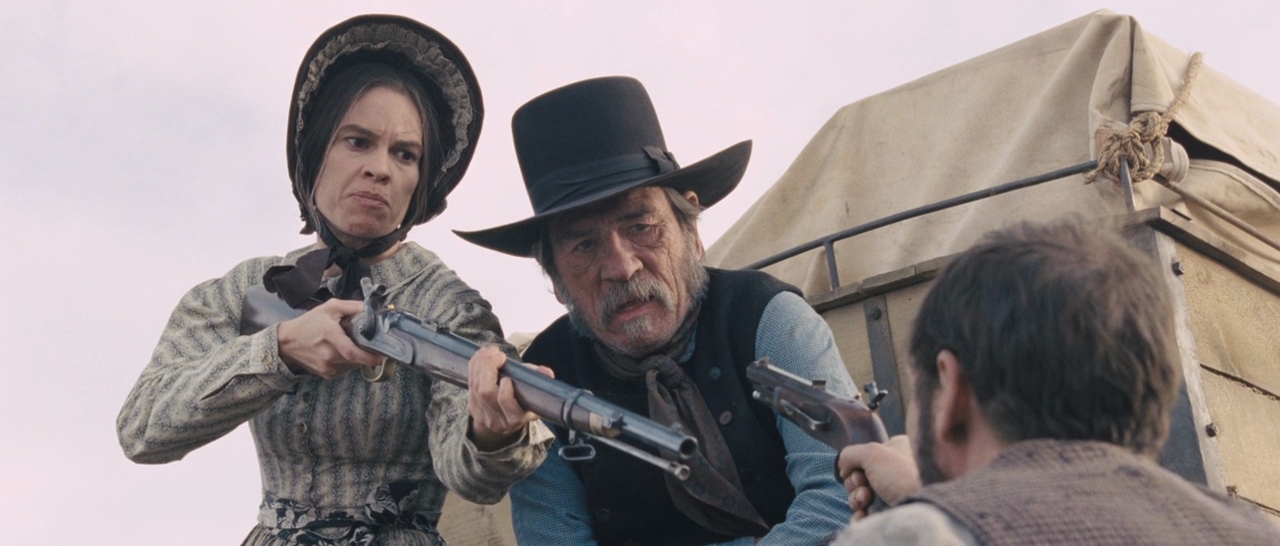
The dynamic between Cuddy and Briggs helps to pull us from the brink of despair and adds a little bit of levity to the proceedings. For the most part, Briggs is a bumbling fool who has no care for any but himself. But as he begins to know and respect Cuddy, he comes to consider her a kindred spirit, a fellow outsider who is misunderstood by the world.
The Homesman has been out long enough that it is fair game to spoil—long enough that when you google search “The Homesman” it pops up with “People also ask… Why did Cuddy kill herself in The Homesman?” The shock of the image, the bizarre behavior the night before her death, and the lingering moments in its wake tear through the fabric of the film. To this point, the story had been entirely Cuddy’s, with Briggs a prominent supporting role. But as the spotlight shifts to the rambunctious bumbler after her demise, the tone changes as well. There’s enough foreshadowing that her suicide doesn’t come as a complete blindside on a personal level—but narratively one does not see it coming. She’s the main character and there’s a good chunk of movie left, she’s not going anywhere, right? In any case, it makes the rest of the film play like a weirdly perverted daymare as the narrative moves on without her, a roughly accurate translation of how it feels to lose someone in real life.
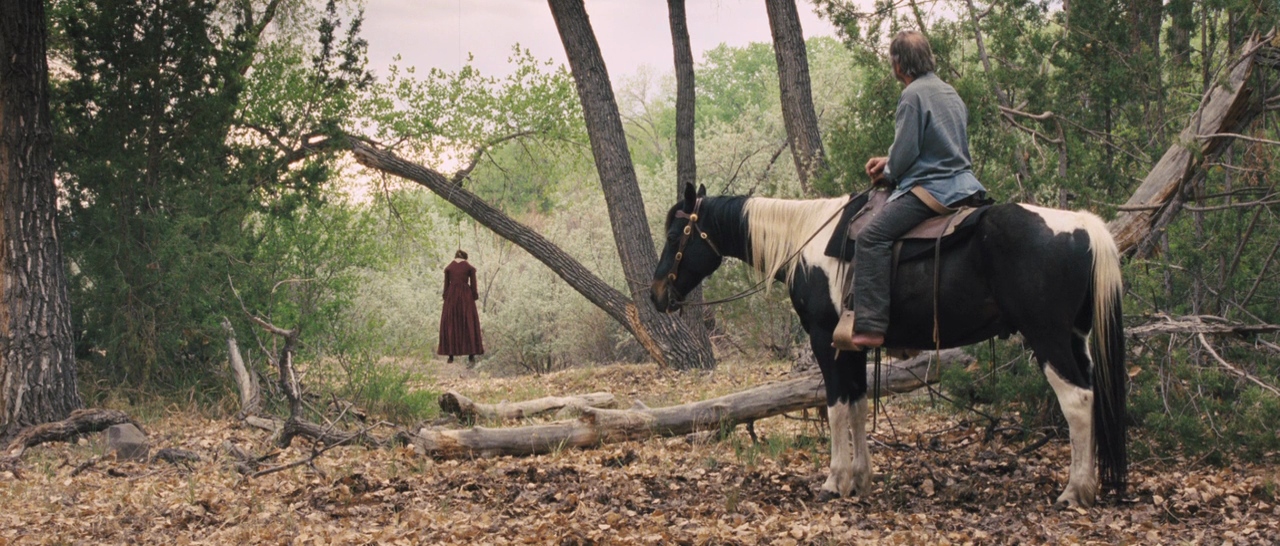
After her death, with Briggs now receiving all the attention, the story becomes a strange excursion into the surreal. With the three insane women—whom he tried and failed to abandon—Briggs stops by a solitary hotel that juts out of the barren countryside like the house in Days of Heaven. He’s turned away because the proprietor (James Spader) is hoping to attract some investors and doesn’t want filthy men and crazy women clogging up his establishment, which is marked by its heaps of luscious food, fancy paintings and the operator’s ridiculously pompous outfit. It’s the kind of place where Briggs (and Mary Bee) don’t belong. After a standoff, Briggs leaves and levels some harsh words at the owner. “Your mothers and your sisters and your wives and your daughters will curse your broke-dick souls.” He comes back in the night, steals some food, shoots the proprietor in the foot, and burns the place to the ground. With all those wild and risky moves under his belt, Jones then presents us with a challenging coda—after being told his money from the Bank of Loup is no longer accepted because the bank went under, Briggs boards a ferry and backslides into his old foolhardy ways. It’s a suitably unexpected ending to the film.
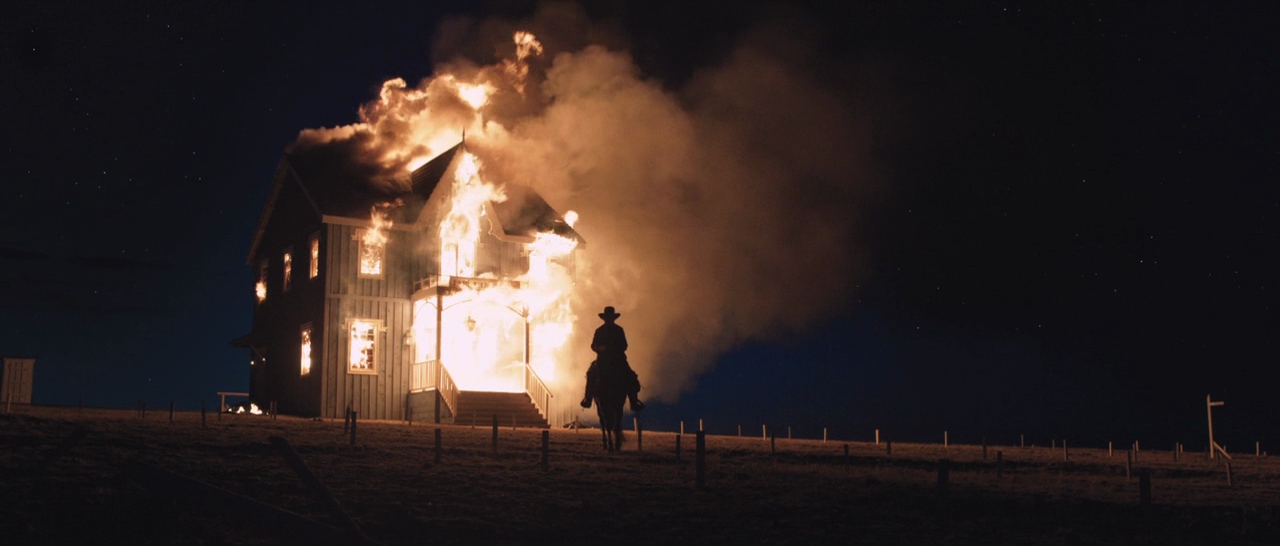
I’ve seen more than a few people suggest that the book helps clarify the slippery narrative presented in the film. If I ever chance upon it, I’d be curious to see if it elucidates Cuddy’s emotional oddysey. One of the film’s hardest asks is for us to accept that a good-looking, resourceful woman would be routinely spurned by every man in her proximity, to the point that she suffers from a sickness worse than the mad women in her care; to the point of commiting an act that violates her entire moral system.
I think the best way to get a handle on The Homesman is to view it as a story of failed redemption. A lifelong outlaw, Briggs has never cared for anyone but himself, and the world has reinforced that such a way of life is the correct one for him. But when he meets Cuddy, he realizes that there is goodness in the world after all. He just doesn’t know what to do with it after all those years of caring only for his own needs. Having his brief brush with the moral good come to an end in such a devastating way, and then to see the impact that has on him wear off in short order, is about as brutal a depiction of the fallenness of mankind as one can ask for.
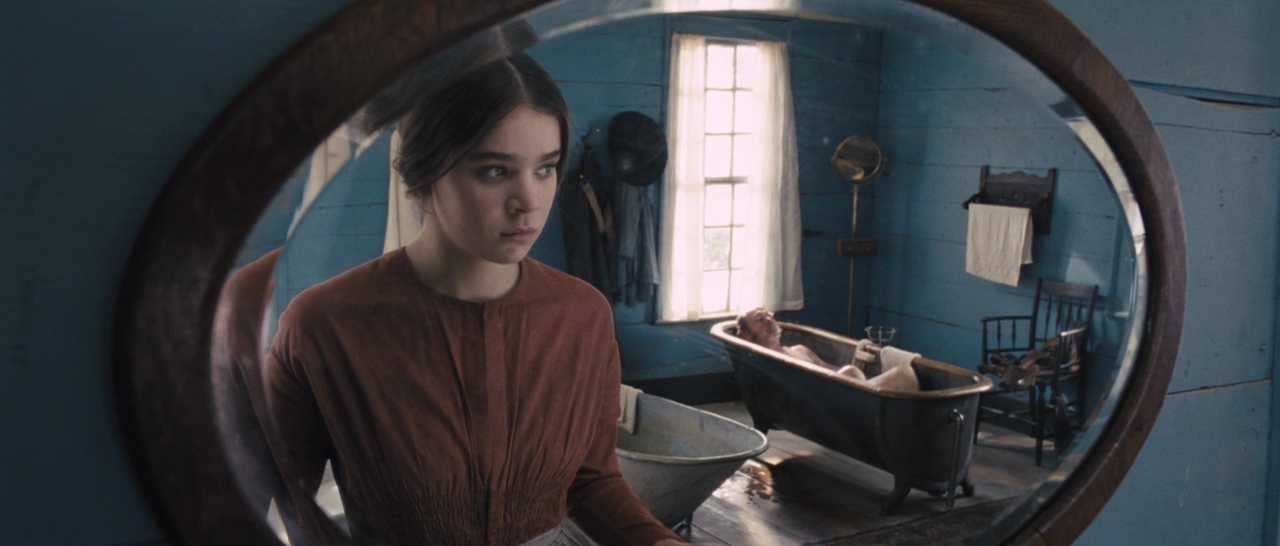
With its focus on mental illness and leisurely pace, The Homesman is liable to throw the viewer off because it presents itself with such familiarity. While I wish Jones could have gotten more out of his large and talented cast (Meryl Streep, John Lithgow, Hailee Steinfeld, Tim Blake Nelson, Jesse Plemons, and William Fichtner all make appearances), to do so would probably have turned The Homesman into a sprawling mess and sapped it of much of its small-story poignancy. In any case, it’s grim, subtly funny, hard to swallow, and most importantly, far too interesting to dismiss.